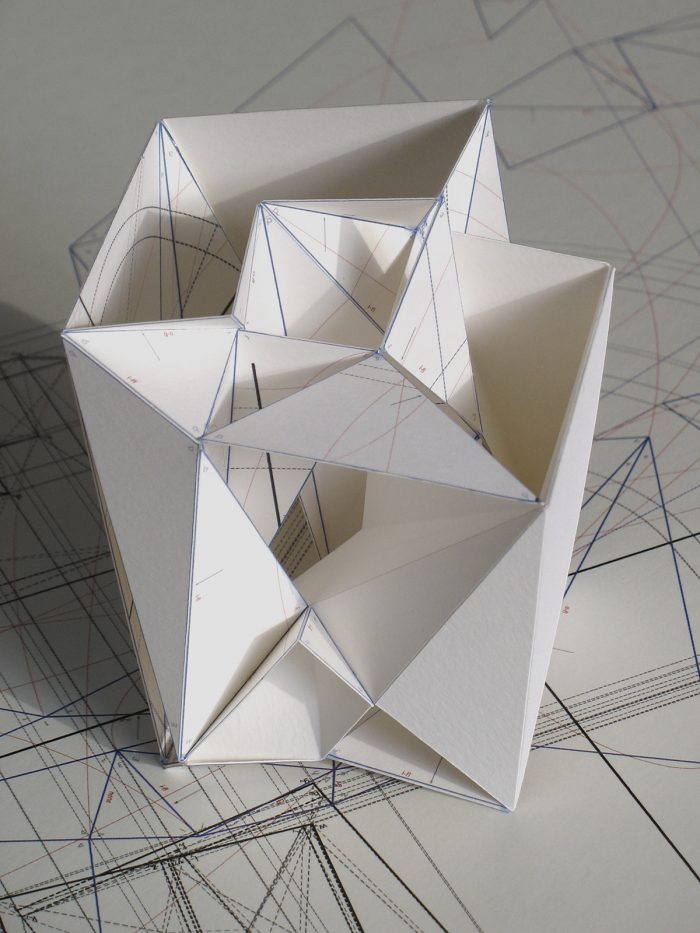Faculty Spotlight: Eric Olsen on Building and Teaching for the Future
Professor Eric Olsen’s practice explores the appropriation and creative application of technologies as both an instrument for testing ideas and a vehicle for expanding the realm of construction possibilities. Eric joined Woodbury University with an extensive teaching background including appointments at the University of California Berkeley, California College of the Arts, the University of Michigan, the University of Colorado, and as a Graduate Student Instructor at Harvard University. We recently caught up with Eric to discuss his interest in design and teaching, as well as how he’s reimagining ubiquitous materials in everyday life.
Interview with Eric Olsen
 Why did you choose to study architecture?
Why did you choose to study architecture?
I grew up in Las Vegas at a time when the city was experiencing extraordinary growth. The desert landscape transformed into city before my eyes. All of the construction around me, the buildings in various stages of completion, were a source of deep fascination as well as a playground. At the end of the school day, after the construction crews packed up for the day, I spent time exploring and climbing around these skeletal structures. When it was time to choose a college major, architecture was an inevitability… I unofficially studied it for much of my childhood.
You have a diverse background as both a licensed architect and professor. What do you believe is the relationship between academia and practice?
I am interested in the relationship between academia, architectural practice, and the production of the built environment. The imagination of academia is reconciled with the manufacturing and labor economies of building production through our work as practicing architects. Internships are really valuable for architecture students because they reinforce the idea that, while the academy prepares us for practice, much of an architect’s education comes though the struggle to realize their ideas as buildings.
 Working and living in Los Angeles, how does the city shape your practice and teaching?
Working and living in Los Angeles, how does the city shape your practice and teaching?
Los Angeles is an exciting place to practice and teach; it is expansive and heterogenous with inexhaustible opportunities for exploration. Residential architecture in Los Angeles interests me for several different reasons; because clients come to L.A. to build their dreams… literally, because Los Angeles’s residential architecture defines much of the post-war canon, and because we are experiencing a transformative moment given the shortage of housing supply. For these reasons, much of my work as an architect, as well as many of the studios I teach, engage the topic of residential architecture.
Architects often face questions of narrowing project scopes. With changes in climate, technology, and construction techniques, how do you think architects and designers will adapt ways of practicing to advance the profession?
For me, the question of practice in the future isn’t about our profession’s ability to adapt; it’s about our profession’s ability to lead. The capital and labor that finance and construct much of the built environment are resistant to innovation because new ways of doing things involve greater challenges in forecasting and controlling costs. This means that we need to position ourselves at the center of conversations about climate, technology, and construction. Architects are uniquely qualified to navigate legislative apparatus, consumer desires, and building production… successful future architecture practices will need to triangulate these understandings with an intent to define the conversation from a position of leadership.
What projects have you enjoyed working on most in your career?
I enjoy my next project the most, but if I had to choose a completed project, I’d probably go back to my first project. I took a year off between undergraduate and graduate school and moved home to Las Vegas where I worked on a new casino project with $2 billion construction budget. I was 21 years old and it was my first job in architecture. I was given a great deal of responsibility. The forced learning curve of the project, the long hours, and the fast-track adrenaline were addictive. In retrospect, I enjoyed the collaborative atmosphere and seeing such a complex architecture emerge from a vacant lot.
What advice would you give to students who aspire to follow a similar career path?
I believe a strong general education is the key to success as an architect and as an academic; my advice is to seek opportunities to expand one’s education beyond architecture. As a corollary, I also advise students to be skeptical of so-called “disciplinary projects” that claim to unlock some privileged truth about architecture; these projects never stand the test of time. My final piece of advice is to embrace learning opportunities in every phase of one’s career and embody continuous growth.
What three words would you use to describe Woodbury?
Personal. Responsive. Advancing.